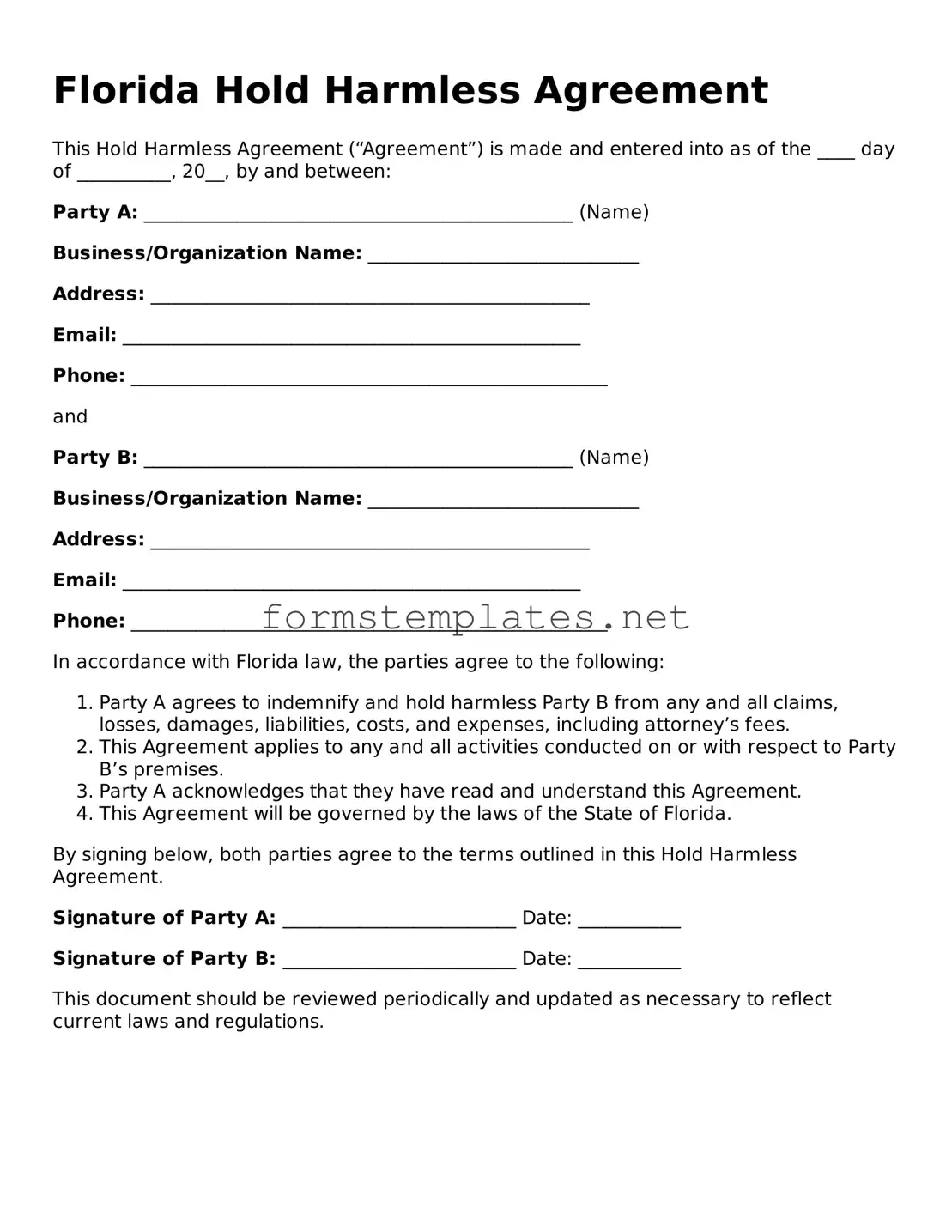Florida Hold Harmless Agreement
This Hold Harmless Agreement (“Agreement”) is made and entered into as of the ____ day of __________, 20__, by and between:
Party A: ______________________________________________ (Name)
Business/Organization Name: _____________________________
Address: _______________________________________________
Email: _________________________________________________
Phone: ___________________________________________________
and
Party B: ______________________________________________ (Name)
Business/Organization Name: _____________________________
Address: _______________________________________________
Email: _________________________________________________
Phone: ___________________________________________________
In accordance with Florida law, the parties agree to the following:
- Party A agrees to indemnify and hold harmless Party B from any and all claims, losses, damages, liabilities, costs, and expenses, including attorney’s fees.
- This Agreement applies to any and all activities conducted on or with respect to Party B’s premises.
- Party A acknowledges that they have read and understand this Agreement.
- This Agreement will be governed by the laws of the State of Florida.
By signing below, both parties agree to the terms outlined in this Hold Harmless Agreement.
Signature of Party A: _________________________ Date: ___________
Signature of Party B: _________________________ Date: ___________
This document should be reviewed periodically and updated as necessary to reflect current laws and regulations.
